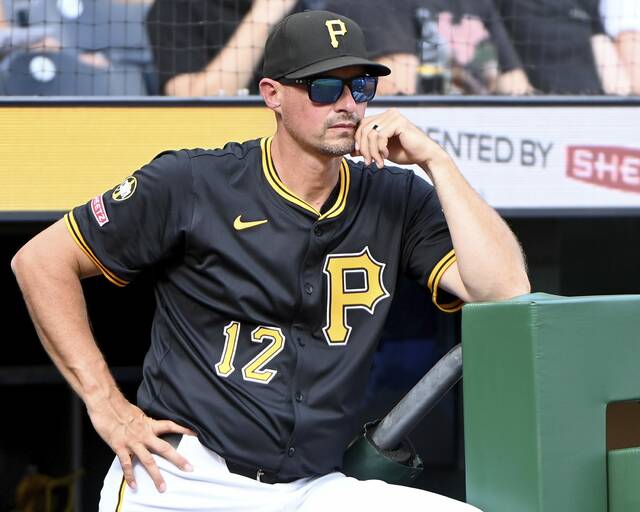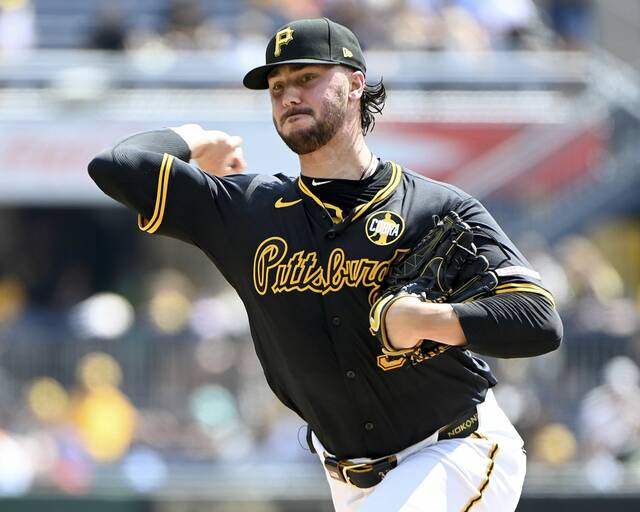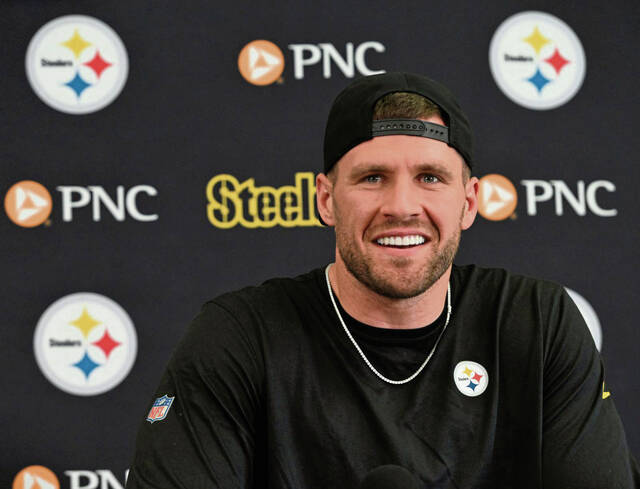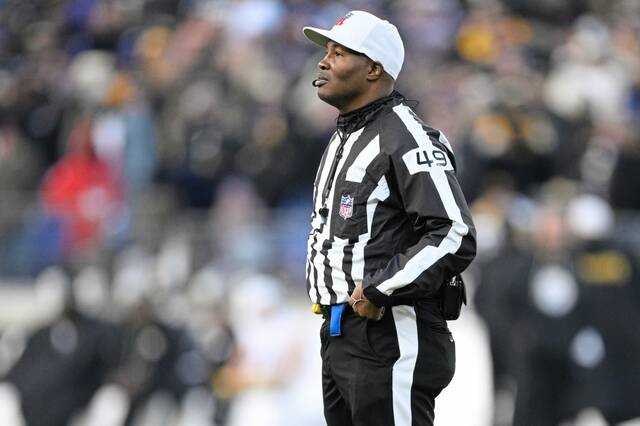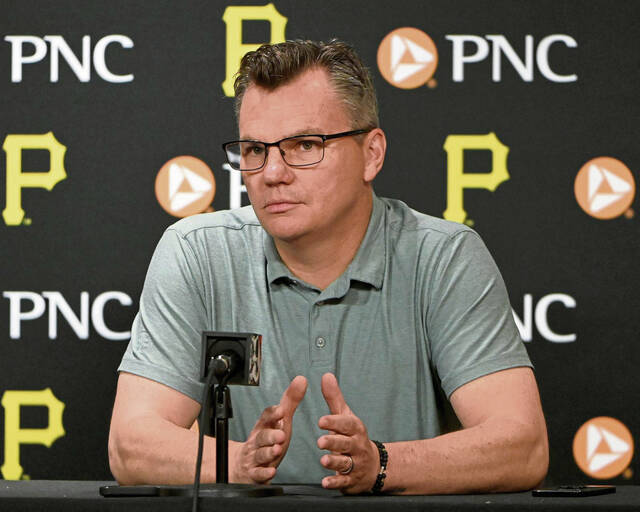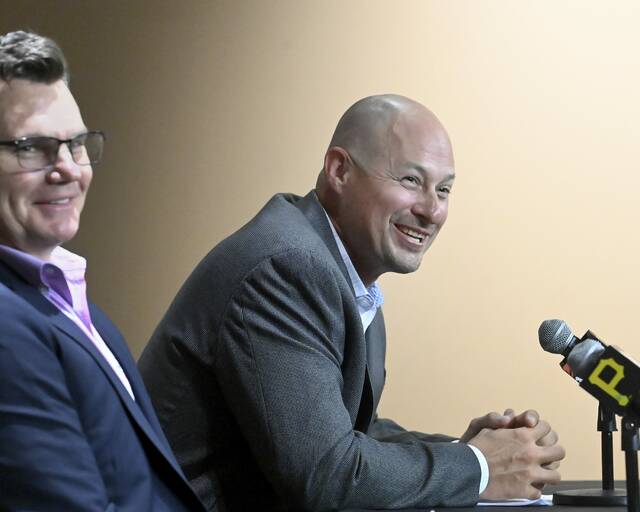Recently, ESPN.com put forth one overarching debate for every franchise in Major League Baseball.
Not one they are currently facing. Rather on an “all-time” question for each club.
Items such as:
• Which member of the Red Sox belongs on the Boston sports Mount Rushmore: Ted Williams or David Ortiz?
• Is Yankees legend Derek Jeter overrated?
• Is the Astros 2017 World Series title tarnished?
When I got to the Pirates section, I assumed that question would’ve been something to the effect of: “What would’ve happened if Stan Belinda managed to get Francisco Cabrera out in the bottom of the ninth inning of Game 7 of the 1992 National League Championship Series?”
Oh. If only.
Well, we know that the Pirates would have gone on to play the Toronto Blue Jays in the World Series that year. The same Blue Jays team that would eventually repeat as champions both in that ‘92 season and in 1993. The Blue Jays team that beat the powerful Oakland A’s in the ALCS.
Would the Pirates have won? My gut tells me no. Unless Barry Bonds’ minor awakening late in that NLCS carried over into the World Series, and he finally produced in October for a change.
Unless Tim Wakefield’s knuckleball could’ve danced through two or three more appearances. Unless the Pirates could have solved Jimmy Key and Juan Guzman, kept Joe Carter in the yard, and prevented Pat Borders from getting on base in ways the Braves couldn’t.
Welp, at least they would’ve been in a World Series for the first (and last) time since 1979.
However, ESPN’s idea was much bigger than that. Their debate was: “If Barry Bonds had stayed in Pittsburgh and never did steroids, would he still be the best player of his generation?”
Yeesh! The 1992 World Series stuff is at least tangible. I can’t even wrap my brain around that one.
There’s so much to unpack there. First of all, staying in Pittsburgh over the winter of ‘92 doesn’t mean Bonds would’ve avoided doing steroids forever, right?
Furthermore, when we say “staying in Pittsburgh,” do we mean to the tune of matching the $43 million contract he got from the Giants that went through 1999, plus the two-year extension that was tacked on in 1997 to make him the highest paid player in the game?
After that, are we to assume the Pirates would’ve been paying Bonds all the way through his retirement?
PFFT! After all, Bonds made over $15 million his last year in 2007. Chris Archer is the highest paid Pirate right now at $9 million.
As a result, if the Pirates front office is paying Bonds that much, maybe they don’t keep Doug Drabek anyway because they can’t afford him. Maybe Bonds forces a trade of Andy Van Slyke if he stays. Or maybe they feel obligated to keep Van Slyke, too, if the team stays competitive with Bonds still on board.
You could argue Jim Leyland stays longer as manager if the team remains a contender. You could also argue that managing Bonds for that long drives Leyland insane before the 1994 strike even hits.
But the question was more about Bonds’ individual prowess as the greatest player of his era, not the Pirates team success. And it’s not like Bonds with the Pirates after ‘92 would’ve needed postseason success to validate his position as best in the game
He didn’t have much in San Francisco. The outfielder was phenomenal during the 2002 playoff run to the World Series in San Francisco. But the Giants couldn’t beat the Anaheim Angels.
Meanwhile, in San Francisco’s other three NLDS appearances with Bonds, they lost. Bonds failed to homer in any of the 11 games. And he totaled just five RBIs. Hence, playoff glory is a non-factor in the discussion regardless of performance-enhancing drug use. Or his employer.
That brings us to the stats.
The widely reported belief is that Bonds started using steroids after the summer of 1998. I’ve always been skeptical of that, wondering if he may have started earlier. But let’s go with 1998.
From 1990-98, this was Bonds’ average season.
HR 36
RBI 110
Avg .305
OBP .437
SLG .601
OPS 1.038
Keep in mind that BALCO — the notorious lab of Bonds’ trainer Greg Anderson — wasn’t raided until September 2003. MLB ramped up steroid testing at the start of 2005. Coincidentally (or not) Bonds missed almost all of 2005 with a knee injury and only played in 14 games.
As a result, we’ll use 1999-2004 as Bonds’ perceived “prime steroid years.” This was his average season in that stretch.
HR 48
RBI 104
Avg .328
OBP .511
SLG .755
OPS 1.266
Sure, the numbers were better. But maybe not as dramatic as you might think in some categories, especially when you consider some season-by-season numbers of Bonds versus his steroid-era and non-steroid-era peers (and the bloated 73-homer season of 2001).
• Through 1998, Bonds led the National League in on-base percentage four times. In 1998-2004, he also did it four times. Then twice more in 2006 and 2007 when testing was in place.
• Through 1998, Bonds led the National League in OPS five times. After 1999, he did so four times.
• Bonds only led the NL in home runs twice. Once “pre steroids” in 1993 when he had 46. And then again in his record-setting year of 2001 when he crushed 73. Indeed, intentional walks played a factor in that, averaging 66 per season over the last five full seasons of his career. But he also led the National League in that category every season between 1992 and 1998.
Also, consider this research from Neil Greenberg of the Washington Post for a story back in 2017.
“If his career had ended in 1998, Bonds would be a .290 hitter with 411 home runs, 1,917 hits, 1,216 RBI, 1,357 walks (289 intentional) and a .966 OPS (164 OPS+). There are four other players eligible for the Hall of Fame with at least 400 home runs and 1,900 hits combined with a .290 career average and 160 career OPS+, all are enshrined in Cooperstown — Babe Ruth, Mickey Mantle, Jimmie Foxx and Ted Williams.
Bonds had accrued 99.6 career wins above replacement by 1998 and he would rank 22nd all-time and 132 hitters with a lower career WAR mark are already in Cooperstown.”
Beyond all that, there is the matter of adjusting for ballparks, lineup support, divisions, weather, potential injuries that were mitigated — or caused — by steroids. So ESPN’s question is like a hypothetical, wrapped in a fantasy, dipped in a paradox.
This was all probably a long answer to a short response, “Yes. Bonds would’ve been the best player of his generation even if he was steroid free and if he had stayed in Pittsburgh.”
For sure.
Most likely.
Probably.
I think.




